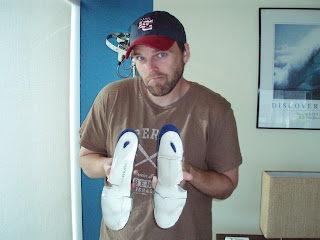 A common misconception people have about stretching is that it is a passive activity–that is, the muscles should be stretched by using of gravity to pull the muscles. Wrong! In fact, over time passive stretching is the best way to injure yourself.
A common misconception people have about stretching is that it is a passive activity–that is, the muscles should be stretched by using of gravity to pull the muscles. Wrong! In fact, over time passive stretching is the best way to injure yourself.
Active stretching is really the proper way to stretch. An active stretch is contracting the muscles as you stretch, both the muscle being stretched and its antagonist–the muscle doing the opposite action. As an example let’s take the hamstrings: most people, when doing a hamstring stretch, will just bend forward at the waist, passively, letting everything–head, neck and arms included–just hang down.
An active version of the same stretch would be bending forward at the waist, but now maintaining an arch in the back to preserve the discs of the lumbar spine (a common source of severe low back injury). Then while pushing the heels down into the ground and the knees back (which contracts the quadriceps, the antagonists to the hamstrings), the butt is actively lifted upward toward the ceiling, literally pulling the hamstrings from one end (the knees) and oppositely from the other (buttocks). That, my friends, is an active stretch.
Watch the video below to see a demonstration of active stretching. Passive stretching is sometimes warranted, particularly if you have never stretched, or it’s been so long it may as well be considered never…in these cases, a passive stretch will be just fine. But over the long haul, if you want to prevent injury and get the best stretch you can, that comes from active stretching.




















